1.0
Foreword
Residential land markets across the nation continue to adjust to the dynamic economic and property market environment.
Affordability constraints remain key challenges for many buyers with affordability emerging as one of the most important drivers of market activity.
We continue to observe growing buyer interest in relatively more affordable markets (for example, Adelaide and South East Queensland).
In addition to growing buyer demand from existing residents, demand in more affordable markets is underpinned by high overseas migration levels. In the case of Queensland, interstate migration also continues to be another critical driver of demand.
Sale volumes in the March quarter increased in South East Queensland and Victoria. Adelaide volumes moderated over the quarter but remained solid.
Gross prices generally remained resilient over the quarter despite higher interest rates, cost of living pressures and a slowing economy. Incentives and rebates have become increasingly widespread in Melbourne and some Victorian regional markets and are expected to remain in place for some time.
Although construction cost growth has moderated over the last year, consistent with the broader moderation in inflation, the introduction of the National Construction Code (NCC) is expected to see an increase in costs.
Various factors will influence the outlook for the new residential land market. These factors include the continued rebound in the established property market (driven to a significant extent by a growing housing shortage), the future direction of interest rates which will depend on inflation (inflation continues to moderate but remains high) and buyer confidence.
Notably, the nation’s housing affordability and supply crisis is expected to last for some time.
Innovation, ensuring greater affordability and a diverse product offering, to suit a range of market segments and demographic groups, remains key to maximising opportunities.
Our Quarterly Market Insights (QMI) report examines key indicators to anticipate market trends and assess the outlook. We analyse past and present market performance to identify future directions. We are committed to providing leading market insights, forecasts and in-depth Australian residential property market analysis.

1.0 National Highlights

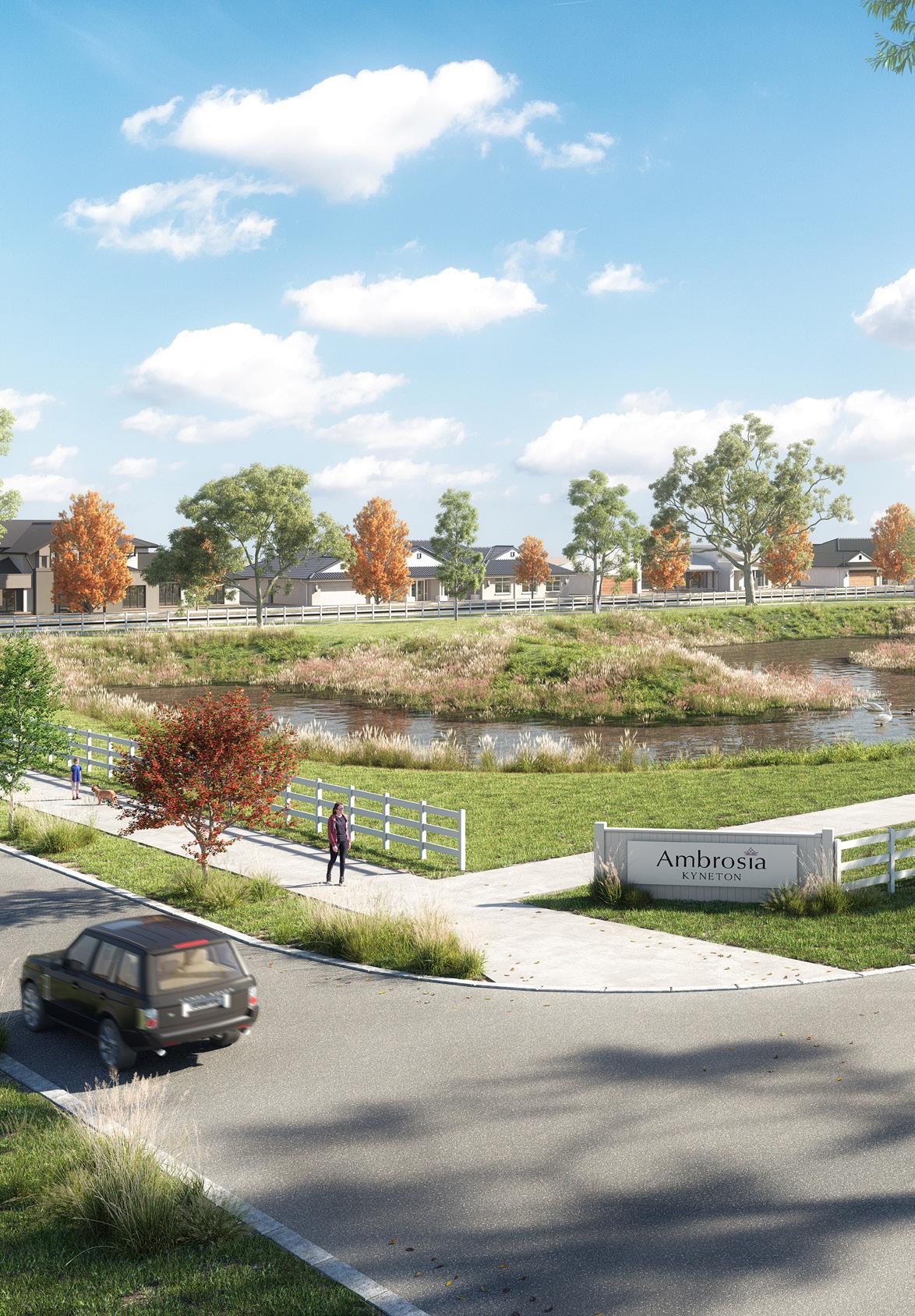 Ambrosia - New Oliver Hume project in Kyneton, Victoria. Artist Impression.
Ambrosia - New Oliver Hume project in Kyneton, Victoria. Artist Impression.
2.0 Victoria
Market Drivers
High interest rates, cost of living pressures and relatively higher taxes (compared to many other jurisdictions) remain key challenges for Victoria’s economy.
The State’s unemployment rate has remained relatively low (4.1% in March 2024 on a seasonally adjusted basis) but is expected to edge higher.
Population growth remains a key driver of economic growth and the property market.
Victoria’s population increased by around 192,700 people in the year ending September 30 2023. This was the largest increase of all states and territories and higher than NSW (around 186,100).
Population growth was driven by (net) overseas migration (over 161,750) over the period.
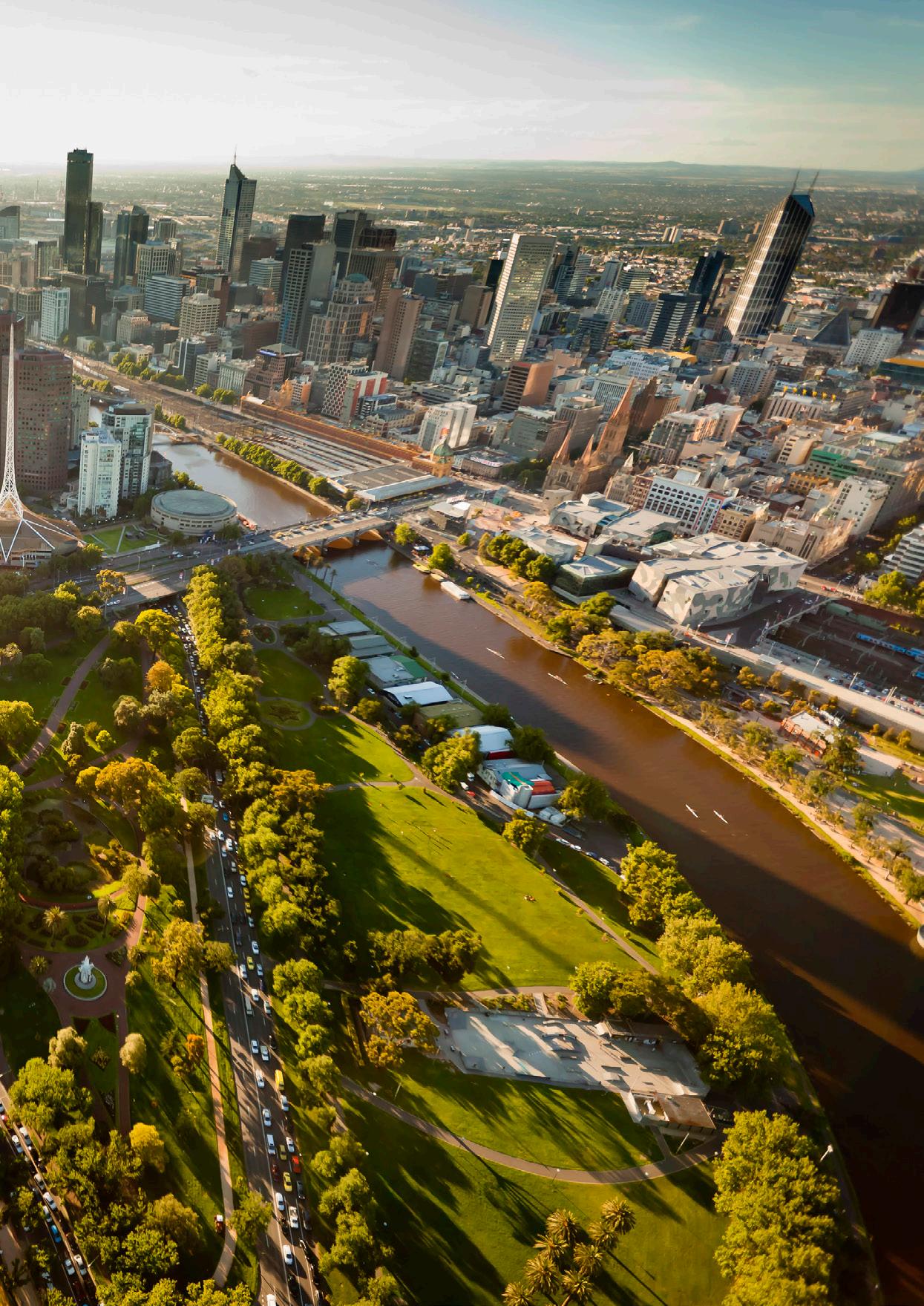
Population growth remains a key driver of economic growth and the property market.
Land Market
Prices
The median (gross) price of metropolitan Melbourne (conventional) lots increased by 2.3% to reach $408,000 in the March quarter 2024.
Net prices remain much lower, however, with generous incentives and rebates becoming increasingly common over the last year.
$450,000
$400,000
$350,000
$300,000
$250,000
$200,000
$150,000
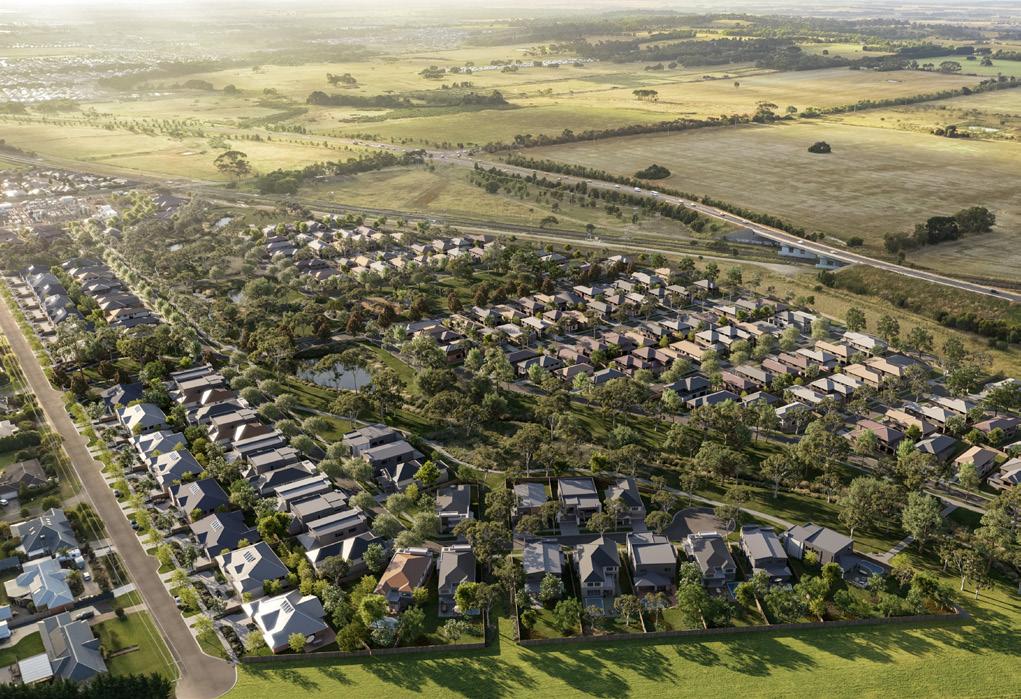
$500,000
$450,000
$400,000
$350,000
$300,000
$250,000
$200,000
$150,000
$100,000
$50,000
$0
Land Market
Sales Volume
The volume of Melbourne lot sales rose in the March quarter 2024.
The result was driven partly by more transactions occurring in key markets including Melbourne’s western and northern greenfield growth corridors.
Volumes, however, remain well below long-run average levels and underlying demand due to affordability and serviceability constraints and lower levels of buyer confidence.
Source: Oliver Hume.
The average time on market (the time taken to sell lots from release) in the Melbourne market reached a recent all-time high in the March quarter of 2024.
New Residential Land - Average Time on Market (Days) - Metropolitan Melbourne Growth Area Municipalities
Source: Oliver Hume. Time on Market
Median Lot Prices by Suburb (Gross)
$435,000
$517,500
$455,000
Development Sites
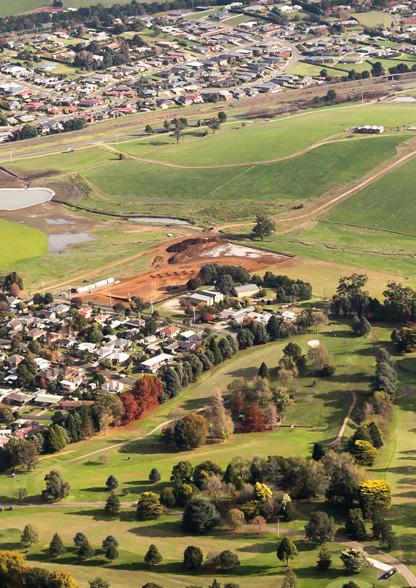

Development site purchaser demand continues to increase steadily, buoyed by a gradual improvement in sentiment. This is despite continued challenges such as higher taxes and higher borrowing costs.
Sentiment has been increasingly driven by a range of factors including:
• Growing housing shortages
• The confirmation that policy settings will not change (including especially the State Government’s overall strategic planning framework which aims to constrain greenfield residential development going forward)
• The expectation that the residential retail land market will improve gradually over the medium term because of lower net prices driven by the growth in incentives and rebates.
Views on monetary policy and interest rates have also driven sentiment to a certain degree.
Although interest rates are now generally expected to stay higher for longer, given recent data which suggests inflation remains too high, many developers are increasingly of the view that we continue to approach the point when monetary policy might be eased.
This is especially the case given the continued slowing of the Australian economy. Nevertheless, inflation remains the key focus, and data over the coming months will provide much needed certainty on potential future interest rate movements.
Development site inventory remains constrained, with many land holders opting to hold, given the view that demand is likely to far exceed supply over the medium to long term.
Finance costs have remained relatively stable in recent months. However, some developers are also factoring in potential interest rate reductions should the RBA move to ease monetary policy.
Infrastructure and related engineering costs remain high, but cost growth has moderated and in some instances stabilised.
The State Government’s decision, as noted in the most recent State Budget, to decrease infrastructure spending going forward may also help to constrain cost growth even further.
Higher State Government taxes, planning/regulatory constraints in Victoria and increasingly robust markets elsewhere in Australia, has seen an increasing number of local developers consider opportunities in other markets (including especially South Australia and Queensland).
In terms of the local market, many developers are focussing on long-term opportunities and ways to increase yield given growing land supply constraints.
By the early to mid-2040s, it’s anticipated that metropolitan Melbourne and Geelong will have minimal new residential land available.
By this time, most planned large-scale land releases are expected to have been absorbed and not replaced under current policies.
Although development site values have remained relatively stable in recent years, with the trend expected to continue in the near-term, values are expected to rise over the medium to long term due to growing land supply constraints.
The rise in land values, combined with limited land supplies and changing demographics (including especially an ageing population), will require higher densities and increased efficiencies throughout greenfield markets.
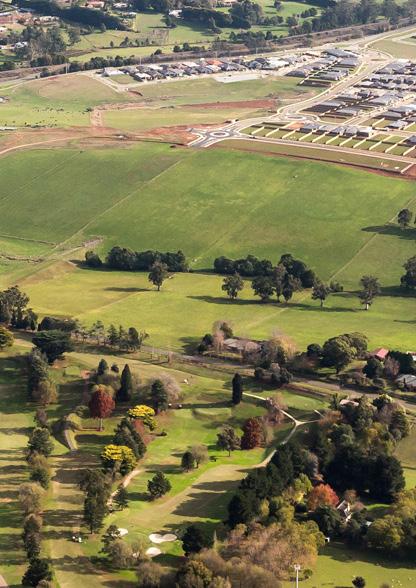
Development site purchaser demand continues to increase steadily buoyed by a gradual improvement in sentiment.
3.0 Queensland
Economy
Queensland’s economy remains resilient despite various challenges including higher interest rates and inflation.
Although Queensland’s unemployment rate has edged higher over the last year, it remains at historically low levels (4.1% as at March 2024 on a seasonally adjusted basis).
Population growth has been a key driver of economic growth. Queensland’s population increased by around 143,600 people over the year ended September 30 2023 (up 2.7% to almost 5.5 million).


High levels of overseas migration (almost 88,000 people on a net basis) and strong interstate migration (over 32,600 people on a net basis) drove the strong population growth results over the period.
Many factors, including strong population growth and solid commodity exports, are expected to support Queensland’s economic development.

Queensland’s economy remains resilient despite various challenges including higher interest rates and inflation.
Land Market
Land Market
New residential land (gross) prices moderated in the March quarter of 2024 from the record high in the previous quarter ($345,450 from $349,200).
Despite higher interest rates and inflation, land prices across the broader South East Queensland market remain higher than levels observed throughout 2023.
South East Queensland’s relative affordability and diversity of stock being offered are critical competitive advantages of the market.
South East Queensland Median Gross Land Price
$370,000
$350,000
$330,000
$310,000
$290,000 $270,000
$250,000
Sales Volumes
The volume of land sales rose in the March quarter 2024 from the previous quarter. The increase was driven by continued robust population growth and a steady supply of new stock to the market.
South East Queensland Residential Land Sales – Quarterly
Median Lot Size
The median size of lots transacted across the broader South East Queensland market rose in the March quarter 2024.
The size of lots transacted over the last year has remained relatively stable given the continued supply and robust demand for lots sized between 400 sqm and 500 sqm.
South East Queensland Residential Land Median Lot Size (sqm) - Quarterly
4.0 South Australia
Economy
The South Australian economy has remained relatively resilient despite higher interest rates and cost of living pressures.
CommSec recently again ranked South Australia as the best-performing economy.
Areas of relatively strong performance include economic growth, unemployment, construction work and dwelling starts.
South Australia’s unemployment rate remains around record lows (3.9% in March 2024 on a seasonally adjusted basis).


Population growth remains a key driver of the State’s growth.
South Australia’s population increased by around 30,700 people over the year ended September 2023 (up 1.7% to reach over 1.86 million).
Net overseas migration (up over 28,580 people over the year ended September 2023) drove the strong population result.
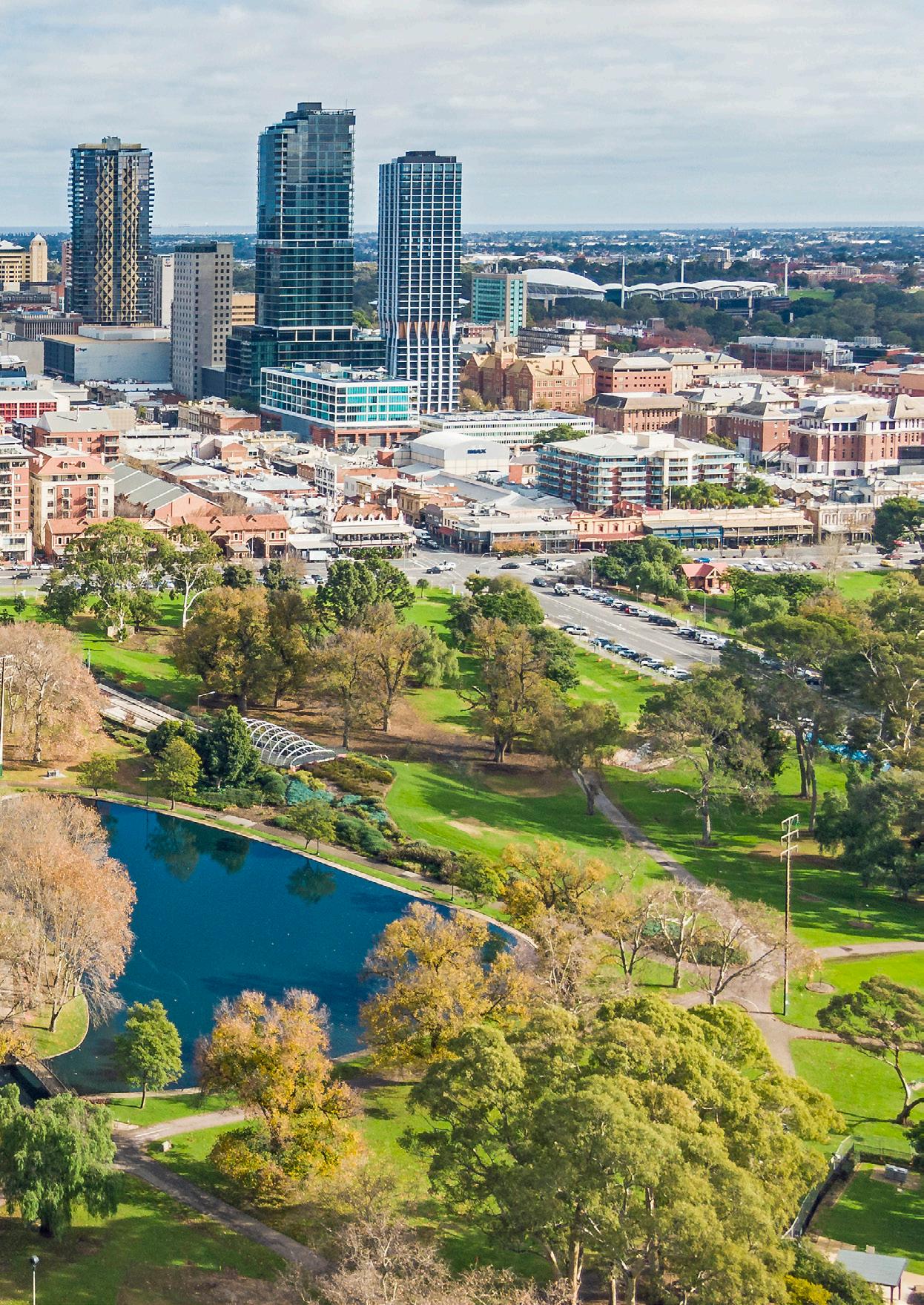
The South Australian economy has remained relatively resilient despite higher interest rates and cost of living pressures.
Land Market
Prices
Greater Adelaide median residential land (gross) prices rose in the March quarter of 2024 (up 6.5%) to reach $279,500 (up 16.1% over the year).
Residential land price growth has been driven by Adelaide’s relative affordability and growing housing shortage (Adelaide has one of Australia’s lowest capital city vacancy rates).
Greater Adelaide Median Gross Land Price
$290,000
$270,000
$250,000
$230,000
$210,000 $190,000 $170,000
Over 630 new residential lots were sold in the Greater Adelaide market in the March quarter 2024.
The volume of sales moderated from the previous quarter (663) but remained higher than the same time last year (569).
The median size of lots transacted across the Greater Adelaide market remained stable (450 sqm) in the March quarter 2024.

HEAD OFFICE Level 2 4 Riverside Quay Southbank, VIC 3006 P. 03 9669 5999
BRISBANE Shop 9, Gasworks Precinct 26 Reddacliff Street Newstead, QLD 4006 P. 07 3216 1666

08 7201 3999 SYDNEY Level 24, Tower 3 300 Barangaroo Avenue Sydney, NSW 2000 P. 1300 881 780 GOLD COAST Suite 5B, Emerald Lakes Town Centre Commercial 3027 The Blvd, Emerald Lakes Carrara QLD 4211
P. 1300 645 433 DARWIN 129 Asche Street Muirhead, NT 0810
1300 7373 598
